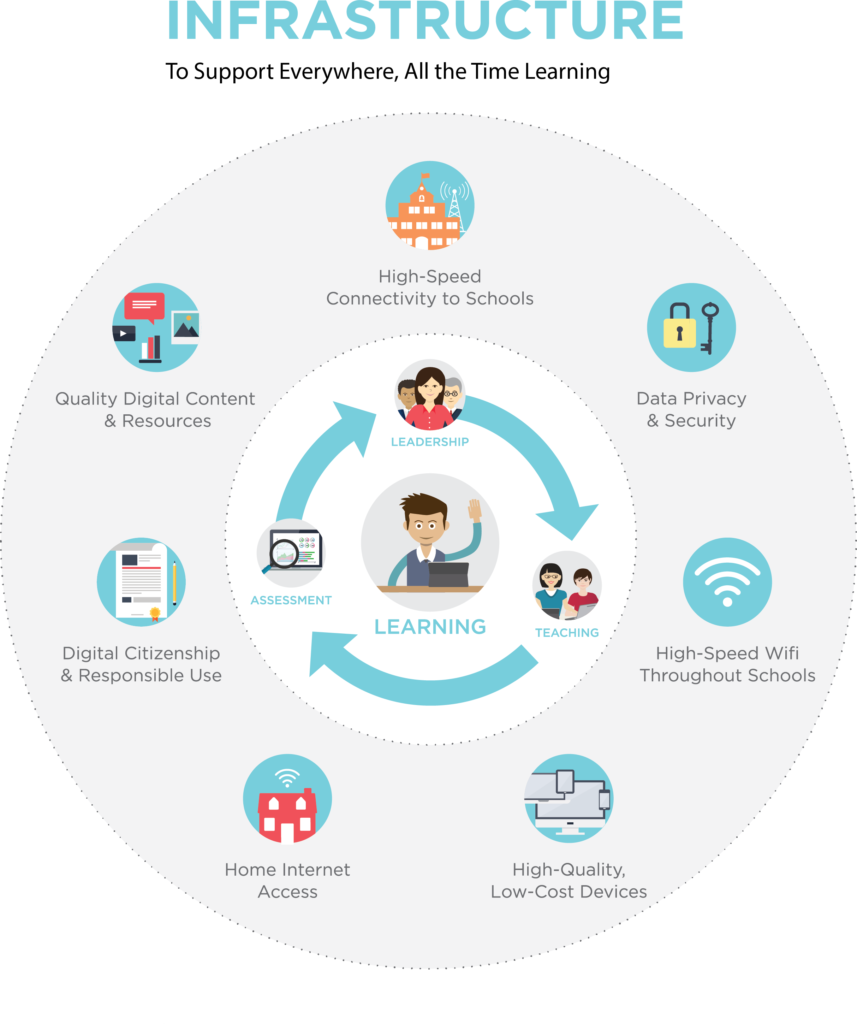The New National Education Technology Plan: What’s in it for Me?
In December of 2015, on the same day that President Obama signed the “Every Student Succeeds Act” (ESSA), the U.S. Department of Education released the 2016 National Education Technology Plan (NETP). First released in 1996 and updated every five years since, the NETP is the flagship educational technology policy document for the United States. The 2016 Plan, Future Ready Learning: Reimagining the Role of Technology in Education, articulates a vision of equity, active use, and collaborative leadership to make everywhere, all-the-time learning possible.
ConnectED Fellow, Zac Chase, from the U.S. Department of Education’s Office of Educational Technology, was the quarterback of the 2016 NETP and joined me in a recent webinar to discuss the plan.
The webinar conversation included the purpose, key areas and themes, practical examples of districts leading the way, and advice on how school leaders can best take advantage of the nationwide guidance provided in the NETP. The plan, which can be accessed in multiple formats, includes the following components: (1) Introduction, (2) Learning, (3) Teaching, (4) Leadership, (5) Assessment, and (6) Infrastructure. In an effort to coordinate efforts and support states and districts implement personalized learning plans, Future Ready was pleased to work with the US Department of Education to align the Future Ready Framework with the various components of the NETP.

One major theme of the plan discussed in the webinar, is the need to move from passive to active use with technology. The “digital use divide”, as the plan coins it, exists between learners who are using technology in active, creative ways to support their learning and those who predominantly use technology for passive content consumption. The plan offers practical examples of active use and ways that technology is being used as an accelerant to personalize learning for all students in addition to calling on educators at all levels to consider how they might better facilitate more active uses.
Another key discussion point from the plan is the need for ubiquitous connectivity everywhere learners might need it – inside and outside of school. The NETP highlights the need for a robust infrastructure and challenges districts to support home access, a familiar need for our nation’s traditionally underserved students.
The conversation highlighted recent successes in building such ubiquitous structures such as that of Superintendent Darryl Adams in Coachella Valley (CA), the modernized Lifeline program, and resources available from Future Ready partner EveryoneOn.
Collaborative leadership is third key theme of the NETP; a research-based foundation in developing Future Ready Schools. The plan emphasizes the need for school leaders to develop a shared vision for how technology can support learning and teaching and how to secure appropriate resources to sustain technology initiatives. Communicating with all stakeholders by using appropriate media and technology tools and establishing effective feedback loops are critical aspects that were also called out. To support this work, school leaders are encouraged to visit the Future Ready Leadership Hub, a one-stop shop for professional learning resources and opportunities. The hub includes live webinars and chats, conference connections, partner activities, US DOE’s Future Ready Leaders Project, as well as other opportunities.
While acknowledging the ongoing need to provide greater equity of access to technology itself, the plan goes further to call upon all involved in American education to ensure equity of access to transformational learning experiences enabled by technology. As such, we encourage school leaders to dive into the NETP to ensure a comprehensive digital implementation while simultaneously seeing what’s possible and how many districts are already transforming learning for their students.
All for the kids we serve,

Director of Innovation
Future Ready Schools
Source: tech.ed.gov/netp
Image Credits: Office of Educational Technology, US Department of Education
